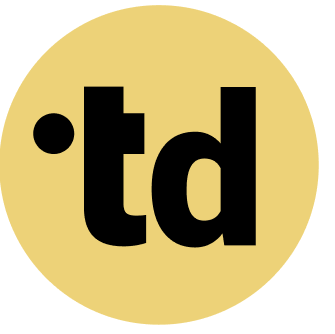Key Takeaways
Hybrid human-AI teams are a direct response to modern workplace overload, with 70% of German firms expecting AI to boost productivity.
Successful integration requires a clear playbook that defines roles for both humans and AI, addressing the fact that 71% of non-adopters cite a lack of knowledge as a key barrier.
Measuring success involves tracking both productivity gains (up to 20.9% in some sectors) and improvements in employee satisfaction and innovation.
Today's teams are navigating unprecedented levels of chaos, with 52 percent of organizations citing resistance to change as a major barrier to progress. The old ways of working are breaking under the strain, but a new harmony is possible. This guide to creating hybrid human-AI team structures is for the Team Architects-the leaders building the future. We'll explore how integrating AI agents into your workflows can cut through the noise, delivering up to a 16 percent boost in productivity and giving your team the clarity it needs to succeed. It's time to stop managing overload and start designing for flow.
Practical Framework for Team Architects
As a Team Architect, you can apply these principles to your organization:
- Map Current State: Document existing roles and responsibilities using a tool like teamdecoder.
- Identify Gaps: Where are roles unclear? Where do humans and AI agents overlap?
- Define Clear Boundaries: Specify which tasks are handled by humans vs. AI agents.
- Create Accountability: Assign clear decision rights for each role.
- Iterate and Improve: Continuously refine based on team feedback.
Confronting the Overload Crisis in Modern Teams
The modern workplace is defined by a relentless pace, leaving many teams feeling overwhelmed. In Germany, a staggering 91 percent of companies now view generative AI as critical to their future, signaling a massive shift in operational strategy. This isn't just about technology; it's a response to the very real challenge of managing complex workflows and information streams. Many organizations are struggling, with 71 percent of non-adopters citing a lack of knowledge as a primary hurdle to integrating new tools. This skills gap creates a cycle of inefficiency and fatigue. The pressure to adapt is immense, yet the path forward remains unclear for many leaders. Avoiding common pitfalls starts with acknowledging this core problem. This environment of constant change demands a new model for teamwork, one that intelligently combines human and machine capabilities.
Teams Just Wanna Have Fun: Boosting Clarity with AI
Imagine a workflow where your team is free from repetitive tasks, focusing instead on strategy and creativity. This is the promise of a well-designed hybrid human-AI team structure. In the EU, 66 percent of employees believe AI positively impacts their work, enhancing efficiency and opening new possibilities. Companies that embrace this model are not just chasing trends; they are seeing real returns, with generative AI delivering an average of 3.7 times the initial investment. This isn't about replacing people; it's about augmenting their abilities. For example, a technology company that implemented a hybrid model saw employee quit rates fall by an impressive some due to higher job satisfaction. By automating the mundane, you give your team the space to excel. The key is augmenting human capabilities, not replacing them. This shift transforms the work experience, moving from overload to genuine engagement and better outcomes.
Make Bots and Humans Click: An Architect's Playbook
For Team Architects, the goal is to create a seamless collaboration between people and AI. Success starts with a clear strategy, something many German companies now have in place for generative AI. This involves defining specific roles for AI agents, just as you would for human team members. A great place to start is by identifying tasks where AI excels, freeing up human talent for more complex problem-solving. Our Playful Tip: Think of AI as a new team member with a very specific skillset. Onboard it, define its responsibilities, and clarify its interaction protocols with the rest of the team. You can try teamdecoder for free to map these new roles. Deep Dive: Effective hybrid teams (humans and AI agents) require new governance models, yet only European organizations feel prepared in this area. Your playbook should include clear guidelines on data management, decision-making authority, and quality control to ensure humans remain in the loop. Consider these initial steps for your playbook:
- Identify Repetitive Tasks: Pinpoint at least three to five routine processes that can be automated.
- Define AI's Role: Clearly document what the AI is responsible for, such as data analysis or initial report drafting.
- Establish Human Oversight: Assign a human team member to review and approve AI-generated work.
- Set Up Communication Channels: Determine how the team will interact with and query the AI system.
- Train Your Team: Over many German employees want more AI training, so provide resources to build confidence.
A well-defined structure is fundamental for designing collaborative workflows that actually work. This proactive approach ensures that technology serves the team, not the other way around.
Scaling Your Hybrid Team From Day One
Building your first hybrid team sets the foundation for future growth and organizational development. Start small by focusing on a single department or project, where you can measure impact effectively. In Germany, service providers expect AI to increase productivity by up to a significant portion, a significant metric to track. The key is to create a repeatable model for success. This is especially important for startups and SMEs, where scaling roles efficiently is critical. In the EU, large companies use AI, compared to just of small businesses, highlighting a gap in adoption that scalable models can close. Our Playful Tip: Use a template to define roles and responsibilities from the start, ensuring clarity as you grow. The following steps provide a simple framework:
- Select a Pilot Project: Choose a project with clear, measurable outcomes.
- Define Roles and Responsibilities: Use a platform to map out who does what, including the AI's tasks. See our pricing for options.
- Integrate AI Tools: Implement AI for specific functions like text mining, which is used by nearly seven percent of EU enterprises.
- Measure Performance: Track KPIs before and after AI integration to quantify the impact.
- Gather Feedback: Collect input from the team to refine workflows and improve human-AI interaction.
This structured approach to managing roles in one platform ensures that your hybrid model is built to last. From there, you can confidently apply these learnings across the entire organization.
Measuring the Performance of Your Human-AI Team
To justify investment and prove the value of your guide to creating hybrid human-AI team structures, y More than many companies in Germany expect AI to boost productivity, so tracking efficiency gains is a clear starting point.a clear starting point. Look at task completion times, output volume, and error rates before and after AI integration. Beyond productivity, measure the impact on your people. In Europe, many workers in remote-capable roles enjoy a hybrid schedule, which is often linked to higher job satisfaction. You can use surveys to gauge team morale, perceived workload, and clarity of roles. Another critical KPI is innovation. With AI handling routine work, your team should have more capacity for creative and strategic initiatives. Tracking the number of new ideas or process improvements can demonstrate the transformative power of this new team structure. A clear view of these metrics is essential for measuring performance effectively. This data-driven approach will help you refine your strategy and secure buy-in for broader adoption.
Building a Future-Ready Organization
The journey doesn't end after setting up one team; it's about embedding this hybrid model into your organizational DNA. This is a core part of change management and strategy operationalization. While most Europeans agree AI needs careful management, a future-ready organization masters this challenge. It requires continuous learning and adaptation. With a shortage of over 285,000 STEM professionals in Germany, leveraging AI to bridge the skills gap is a strategic imperative. The ultimate goal is to create a resilient, agile organization. This means building a culture where human-AI collaboration is natural and Many people understands their role in the system. By mastering the guide to creating hybrid human-AI team structures, you are not just optimizing a workflow; you are building a competitive advantage that will last for years. Try teamdecoder for free - shape your team and make change feel like play! #TeamArchitecture #HybridTeam #OrganizationalDevelopment #FutureOfWork
More Links
BCG provides insights from a study showing that two-thirds of Germans utilize AI in their workplace.
Federal Institute for Vocational Education and Training (BIBB) offers information on AI's impact on vocational training and the labor market.
Bertelsmann Foundation presents findings on the limited growth of AI-related jobs in the German labor market.
PwC's press release details how AI contributes to significant productivity growth and higher salaries.
Haufe Akademie provides insights into the role of AI in the modern world of work.
Fraunhofer IAO offers a scenario report examining the impact of digitalization and AI on the future of work.
Federal Ministry of Labor and Social Affairs (BMAS) provides a report on generative AI technology scenarios and their projected impact on work until 2030.
FAQ
What is the biggest challenge in creating a human-AI team?
The biggest challenge is often cultural and educational, not technical. A reported 71% of German companies hesitant to adopt AI point to a lack of expertise. Overcoming resistance to change and ensuring the team has the skills and confidence to work with AI is a primary hurdle.
Can small businesses benefit from hybrid human-AI teams?
Absolutely. While adoption is currently lower in small businesses (11% in the EU vs. 41% in large companies), the benefits are significant. AI tools can help small teams automate tasks, scale operations without a large staff, and gain a competitive edge. Starting with a clear, scalable model is key.
How do I define roles and responsibilities in a hybrid team (humans and AI agents)?
Use a dedicated platform like teamdecoder to map out workflows. Clearly assign data processing, analysis, and routine tasks to AI. Assign strategy, final decision-making, creative problem-solving, and client relations to human team members. This clarity is essential for success.
What kind of ROI can I expect from investing in AI for my team?
Studies show that generative AI can deliver a return of 3.7 times the investment. In Germany, companies expect long-term productivity gains of 8 to on average. The ROI comes from increased efficiency, reduced errors, and enhanced innovation capabilities.
Will AI replace jobs in these hybrid teams?
The focus of a hybrid team structure is augmentation, not replacement. While many EU employees worry about job loss, the goal is to handle tasks that humans find repetitive or overwhelming, freeing them for higher-value work. This addresses skills shortages and enhances existing roles.
Where can I find resources for building a hybrid team?
For articles about transformation and change management, you can take the free online course 'Workforce Transformation' or book a free personal consultation with us. These resources provide structured guidance for Team Architects.





